Other names Bloody Babs Name Barbara Graham | ||
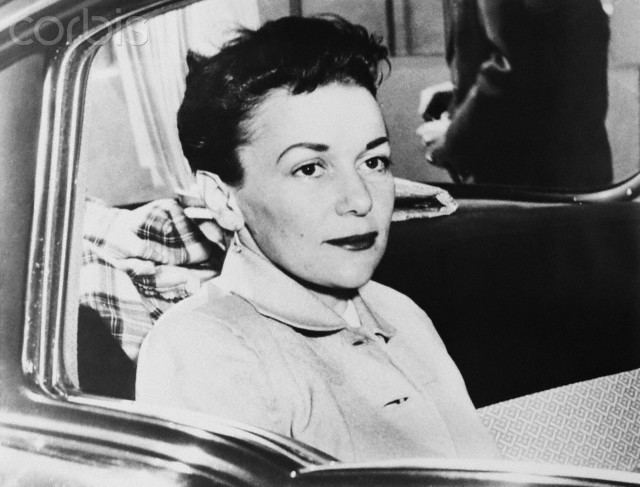 | ||
Full Name Barbara Elaine Ford Children Harry Kielhammer, Thomas James Graham Similar People Susan Hayward, Nelson Gidding, Don Mankiewicz, Robert Wise, Steve Young | ||
Criminal status Deceased (executed) | ||
the ballad of barbara graham val norman
Barbara Graham (June 26, 1923 – June 3, 1955) was an American criminal convicted of murder. She was executed in the gas chamber on the same day as two convicted accomplices, Jack Santo and Emmett Perkins, all of whom were involved in the robbery that led to murder of an elderly widow. Nicknamed "Bloody Babs" by the press, Graham was the third woman in California to be executed by gas.
Contents
- the ballad of barbara graham val norman
- The bad and beautiful barbara graham
- Early life
- Murder of Mabel Monohan
- Arrest and conviction
- Appeals and execution
- In popular culture
- References

Her story of adult criminal activity is told in the 1958 film I Want to Live!, in which she was portrayed by Susan Hayward, who won the Academy Award for Best Actress for her performance as Graham.
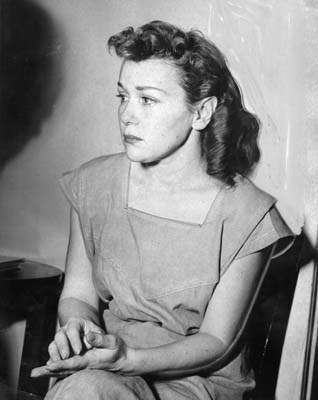
The bad and beautiful barbara graham
Early life
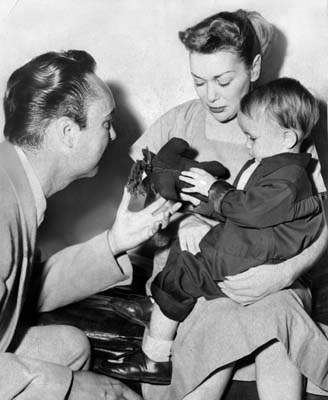
Graham was born Barbara Elaine Ford in Oakland, California, to young unwed mother Hortense Ford, who earned her living through prostitution. On February 23, 1925, Hortense Ford, still unwed, gave birth to a second daughter, Claire Elizabeth. Hortense Ford later married a man by the name of Joseph Wood, whose surname was then given to Barbara and Claire. Hortense had a child with Joseph Wood, a son, Joseph Robert Wood, born on March 27, 1930. By the time Joseph Robert was born, however, the father is said to have died. Hortense Ford Wood (1906–1989) was of Portuguese (Azorean) descent on her father's side, the original family name having been Furtado.
When Barbara was two, her mother, who was still in her late teens, was sent to reform school. Barbara was raised by strangers and extended family, and, although intelligent, had a limited education. As a teenager, she was arrested for vagrancy and sentenced to serve time at Ventura State School for Girls, the same reform school where her mother had been.

Released from reform school in 1939, Barbara tried to make a new start for herself. She married Harry Kielhamer (1913–1993), a U.S. Coast Guardsman, in 1940, and enrolled in a business college and soon had her first two children. The marriage was not a success, and by 1942, she was divorced. Harry Kielhamer was awarded custody of their two sons. Over the next several years, she was married twice more, but each of these attempts at a more traditional lifestyle failed.

After this string of failures, Barbara is said to have become a worker in the sex-trade, as her mother had before her: during World War II, it's been reported that she plied her trade as what was known in some circles as a "seagull", or a prostitute who "flocked" in pairs or groups near naval bases,. It is supposed that Barbara began working in this fashion near the Oakland Army Base, Oakland Naval Supply Depot, and Alameda Naval Air Station. In 1942, she and other so-called "seagulls" traveled to Long Beach and San Diego. She was arrested on vice charges in these naval cities and in San Pedro. At 22, with her good looks, red hair, and sex appeal, she worked for a time in San Francisco for brothel madam Sally Stanford. She soon became involved in gambling and illegal drug circles, cultivating a number of friends who were ex-convicts and known career criminals. She served a five-year sentence for perjury as a false alibi witness for two petty criminals, and served her sentence at the California Women's State Prison at Tehachapi. After her stint in state prison, Barbara moved to Reno, and then Tonopah. She obtained work in a hospital and as a waitress but soon got on a bus for Los Angeles. There she got a room on Hollywood Boulevard and returned to sex work. In 1953, she married Henry Graham, who worked as a bartender at one of her frequent haunts, with whom she had a third child, named Tommy.
Murder of Mabel Monohan
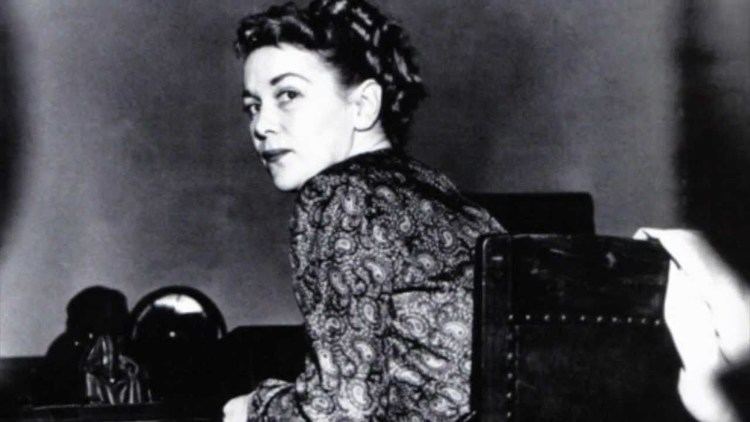
Henry Graham was himself addicted to illegal drugs and known as a hardened criminal. Through him, Barbara met his criminal friends Jack Santo and Emmett Perkins. She started an affair with Perkins, who told her about a 64-year-old widow, Mabel Monohan, who was alleged to keep a large amount of cash in her home in Burbank.

In March 1953, Barbara joined Perkins and Santo, as well as John True and Baxter Shorter (two of their associates), in robbing Monohan's home in Burbank. Barbara reportedly gained entry by asking to use her phone. Once Monohan opened the door for Graham, Perkins, Santo and True burst in, followed later by Shorter. The gang demanded money and the jewels from Monohan, but she refused to give them anything. At this point, according to the statement and testimony of John True, Barbara began viciously pistol-whipping Mrs. Monohan, cracking her skull and then suffocating her to death with a pillow.
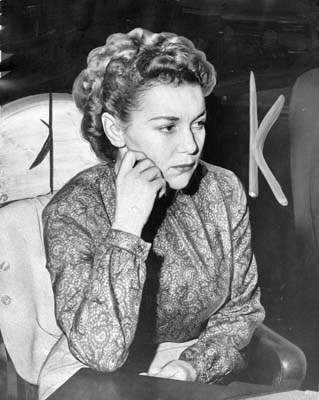
The robbery attempt was a futile effort; the gang found nothing of value in the house and left empty-handed. They later learned that they had missed about $15,000 in jewels and valuables stashed in a purse in the closet near where they had murdered Monohan.
Arrest and conviction
Baxter Shorter was arested on another charge and gave the police details of the Monohon murder and attempted robbery. However, his statement was leaked and he was kidnapped and murdered by Perkins and Santos. Subsequently, John True agreed to become a state witness in exchange for immunity from prosecution. In court, True testified against Graham, who continually protested her innocence. The press nicknamed her "Bloody Babs", reflecting the public disgust for her alleged actions. Knowing the consequences of her state of having no alibi, Graham proceeded to damage her own defense when she desperately accepted the contrived offer of another inmate to pay $25,000 to the inmate and "a friend" who would provide a false alibi. The inmate, however, was working in league with an undercover policeman to reduce her own vehicular manslaughter sentence. The officer offered to pose as the "boyfriend" whom Graham was with the night of the murder if, he insisted, she admitted to him in confidence that she actually had been at the scene of the crime. The officer was recording the conversation. This attempt to suborn perjury, plus the recorded admission that she indeed had been at the scene of the widow Monohan's senselessly violent murder, abutted by her previous perjury conviction, completely destroyed Graham's credibility in court. When questioned about her actions at the trial, she said, "Oh, have you ever been desperate? Do you know what it means not to know what to do?" Graham was ultimately convicted, while the informant was immediately released from jail and her sentence commuted to time served.
Appeals and execution
Graham, Santo, and Perkins were all sentenced to death for the robbery and murder. Graham appealed her sentence while serving time at the California Institution for Women in Chino. Her appeals failed, and she was transferred to the death row at San Quentin State Prison to await execution. On June 3, 1955, she was scheduled to be executed at 10:00 am, but that was stayed by California governor Goodwin J. Knight until 10:45 am. At 10:43 am, the execution was stayed by Knight again until 11:30 am, and a weary Graham protested, "Why do they torture me? I was ready to go at ten o'clock." At 11:28 am, Graham was led from her cell to be strapped in the gas chamber. There, she requested a blindfold so she would not have to look at the observers. Her last words were, "Good people are always so sure they're right." On being advised that taking a deep breath after the cyanide pellets were dropped would make it easier, she replied "How the hell would you know?"
Barbara Graham is buried in Mount Olivet Cemetery, San Rafael, California.
In popular culture
Actress Susan Hayward won the Best Actress Academy Award for playing Graham in the movie I Want to Live! (1958), which strongly suggests that Graham was innocent. However, much of the film is fictionalized; in particular, the presentation of the manner in which the police found and arrested Graham. Evidence clearly pointed to her guilt. Reporter Gene Blake, who covered Graham's murder trial for the Los Angeles Daily Mirror, dismissed the movie as "a dramatic and eloquent piece of propaganda for the abolition of the death penalty." Los Angeles Herald-Express reporter Bill Walker also exposed the inaccuracies of the film in his article in the April 1959 issue of Cavalier, "Exposing Hollywood's 'I Want to Live' Hoax", and in a 1961 book, The Case of Barbara Graham.
Kathleen A. Cairns' 2013 account of Graham's life and murder conviction, Proof of Guilt: Barbara Graham and the Politics of Executing Women in America, takes the viewpoint that Graham was the female dupe of the male victimizers of the murdered Monahan. It finds 1958’s I Want to Live to be a virtually accurate docudrama, with the exception of three minor fictionalizations. The book is highly critical of the many sensationalized popular media treatments of “Bloody Babs.”
Graham was portrayed by actress Lindsay Wagner in a 1983 TV version of I Want to Live!
Jazz/pop singer Nellie McKay had an hour-long touring production entitled I Want To Live! which tells the story through standards, original tunes, and dramatic interludes.
